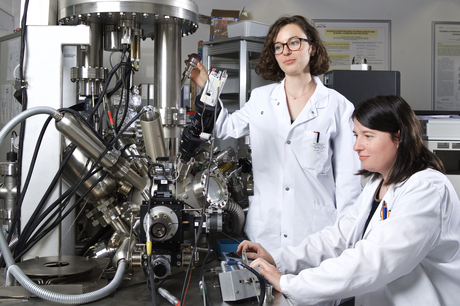A simple way to optimise rechargeable batteries

Swiss researchers have developed a simple and cost-effective procedure for enhancing the performance of conventional Li-ion rechargeable batteries — and all it required was changing the battery’s anode structure.
As noted by Claire Villevieille from the Paul Scherrer Institute (PSI), most battery materials researchers concentrate on the development of new materials. However, Villevieille, co-researcher Juliette Billaud and their colleagues at ETH Zurich took a different approach.
“We checked existing components with a view to fully exploiting their potential,” Villevieille said. By optimising the graphite anode — or negative electrode — on a conventional Li-ion battery, the researchers were able to boost battery performance. The results have been published in the journal Nature Energy.
Anodes are made from graphite arranged in tiny, densely packed flakes, comparable in appearance to a granola bar. When a Li-ion battery is charging, lithium ions pass from the cathode, or positive metal oxide electrode, through an electrolyte fluid to the anode, where they are stored in the graphite bar. When the battery is in use and thus discharging, the lithium ions pass back to the cathode but are forced to take many detours through the densely packed mass of graphite flakes, compromising battery performance.
These detours are largely avoidable if the flakes are arranged vertically during the anode production process so that they are massed parallel to one another, pointing from the electrode plane in the direction of the cathode. This alignment was achieved by André Studart and his team at ETH Zurich. The method involves coating the graphite flakes with nanoparticles of iron oxide sensitive to a magnetic field and suspending them in ethanol. The suspended and already magnetised flakes are subjected to a magnetic field of 100 millitesla — about the strength of a fridge magnet.
By rotating the magnet during this process, the platelets not only align vertically but in parallel formation to one another. As a result, they are perfectly ordered, reducing the diffusion distances covered by the lithium ions to a minimum. If the magnet remains turned on during the ensuing drying process, the platelets keep their new orientation even when removed from the ethanol suspension. The flakes in the compressed graphite bar are also now parallel, enabling the lithium ions to flow much more easily and quickly while also increasing storage capacity by allowing more ions to dock during the charging process.

“Under laboratory conditions, we were able to enhance storage capacity by a factor of up to three,” said Villevieille. And while she acknowledged that “commercial batteries will not be able to fully replicate these results”, Villevieille said that “performance will definitely be enhanced, perhaps by as much as 30–50%: further experiments should yield more accurate prognoses”.
The procedure is simple, cost-effective and scalable for use in rechargeable batteries in all areas of application — from wristwatches to smartphones, laptops and cars. It is also transferable to other anode-cathode batteries, such as those based on sodium.
Furthermore, improving existing components requires less developmental input than a new battery design using new materials. Villevieille stated, “If a manufacturer were willing to take on production, enhanced batteries could be ready for the market within one or two years.”
Predictive AI model enhances solid-state battery design
ECU researchers are working on ways to make solid-state batteries more reliable with the help of...
Boosting performance of aqueous zinc–iodine batteries
Engineers from the University of Adelaide have enhanced aqueous zinc–iodine batteries using...
Sodium-ion battery breakthrough boosts energy storage
Scientists have discovered that leaving water inside a key material, rather than removing it,...




